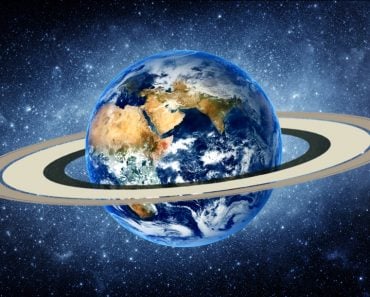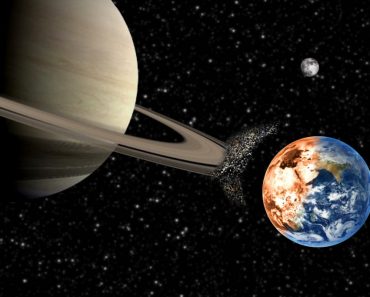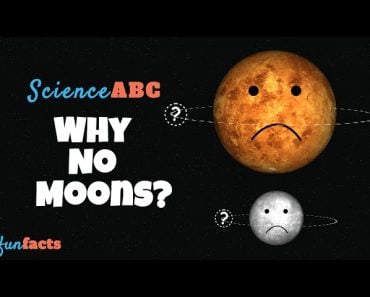Table of Contents (click to expand)
The hexagon at the North Pole of Saturn is a huge storm that has taken a hexagonal shape due to certain rare conditions present at that planet’s northern pole.
The universe is full of patterns and shapes, but sometimes we find shapes in places and forms we certainly don’t expect. That is the case with the hexagonal shape discovered at the north pole of Saturn. Scientists hadn’t expected to see a huge and seemingly perfect hexagonal pattern on top of the ringed planet. As perfect as the shape was, it was (and still is) a bizarre phenomenon.
Let’s take a look at how this beautiful shape was discovered on this gaseous planet and identify the cause behind it.

Recommended Video for you:
What Is The Hexagon At Saturn’s North Pole?
The hexagon on top of Saturn is indeed a storm—and it is huge! The sides of it are longer than Earth, while its depth is assumed to be around 180 miles. The eye of this storm is 50 times larger than the eye of a typical storm here on Earth. The color images from Cassini show that the storm has turned from blue to gold over the period of several years.

There are winds of ammonia and hydrogen around it that move at speeds higher than 300 miles an hour. Scientists have also spotted several vortices (centers of a storm) within the hexagon. Some of these vortices are seen to be moving clockwise, while others move counter-clockwise. The largest of these vortices is seen to be white and is around twice the size of a normal hurricane on Earth.
The hexagon itself is a jet stream that consists of atmospheric gases that scientists have deemed “just a current of air and weather features”.
What is more baffling about the hexagon is that the vortex is at a higher altitude than the clouds of Saturn, meaning that the shape has raised like a huge tower. However, due to the lack of data and unfavorable weather conditions of Saturn, it is difficult to study this phenomenon in more detail.
The aurora of Saturn caused by the magnetic field also sits right atop this hexagonal shape, giving it the look of a fire in the shape of a hexagon.

How Was The Hexagon Discovered?
The year was 1981 when scientists first got a glimpse of the hexagon. Voyager 1 (a satellite used in NASA’s mission to study Jupiter and Saturn) was flying over Saturn when it took pictures that baffled the scientific community at the time. (You can further read about how gravity helped Voyager 1 & 2 escape our solar system here – https://www.scienceabc.com/innovation/gravitational-slingshot-how-did-gravity-assist-voyager-1-2-in-escaping-the-solar-system.html)
It took scientists a few years to get the picture just right, but then they finally saw it—the perfect hexagon on top of Saturn.

After the first discovery, the hexagon was covered with a sheet of darkness. It was only when sunlight again revealed the six-sided shape that the Cassini spacecraft was able to reveal a series of enchanting images.

Cassini had only been able to study the shape in infrared while it was covered in darkness, which still confirmed its existence, but the images were not very satisfactory.
When sunlight finally engulfed the northern pole of Saturn, Cassini matched the speed of the planet and was therefore able to produce a video of the hexagonal weather pattern that showed the movement of the hexagonal pattern (a link to the video is in this article’s references).
What Is The Reason Behind The Hexagon?
Scientists at Oxford University have run simulations to recreate the hexagonal pattern found on the planet and they have come up with several ways by which it is possible. There are also ways to recreate a similar shape for liquids in laboratories.
When the liquid was put in a circular container and rotated at different speeds at its center and peripherals, six-sided patterns like those seen on Saturn were produced in the container. A good number of smaller vortices are also found in the container that interact with each other. It was seen that the boundary changes its shape and takes on a polygonal form because of the spacing of these vortices.

However, these artificially created polygonal shapes are not stable. They need the very specific boundary conditions of speed and viscosity (the characteristic of fluid to seem thick) that are present on the north pole of Saturn.
These conditions are rare, so such a phenomenon is not seen on a planet like Jupiter, which is very similar to Saturn.

In more detailed simulations, it was found that such patterns are seen when the winds flowing around the storm are moving in the direction opposite to the storm.
In simpler words, the slower winds (still moving at horrifying speeds of 220 miles an hour) around the storm flowing in the opposite direction form eddies (circular flows of liquid or gases) that act as miniature storms that push the larger storm (which is just a jet stream, as discussed earlier) into wave-like patterns, finally achieving the hexagonal shape.

Conclusion
As we explore the vast world around us, we tend to find phenomena that leave us with more questions than answers. What we see on the North Pole of Saturn is surely a storm of atmospheric gases in a hexagonal shape, but what is the origin of this exotic incident? We and all the scientists around the world can only try to guess and develop models and theories to explain what we are seeing. However, there is one thing that is certain in this sea of uncertainties—the hexagonal storm of Saturn only adds to the beauty of the most photogenic planet in our solar system.

References (click to expand)
- Saturn's Hexagon in Motion - NASA Solar System Exploration. The National Aeronautics and Space Administration
- Saturn's hexagon could be an enormous tower | Astronomy.com. Astronomy
- Yadav, R. K., & Bloxham, J. (2020, June 8). Deep rotating convection generates the polar hexagon on Saturn. Proceedings of the National Academy of Sciences. Proceedings of the National Academy of Sciences.
- Baines, K. H., Momary, T. W., Fletcher, L. N., Showman, A. P., Roos-Serote, M., Brown, R. H., … Nicholson, P. D. (2009, December). Saturn's north polar cyclone and hexagon at depth revealed by Cassini/VIMS. Planetary and Space Science. Elsevier BV.
- A Vexing Hexagon – NASA Solar System Exploration. The National Aeronautics and Space Administration












